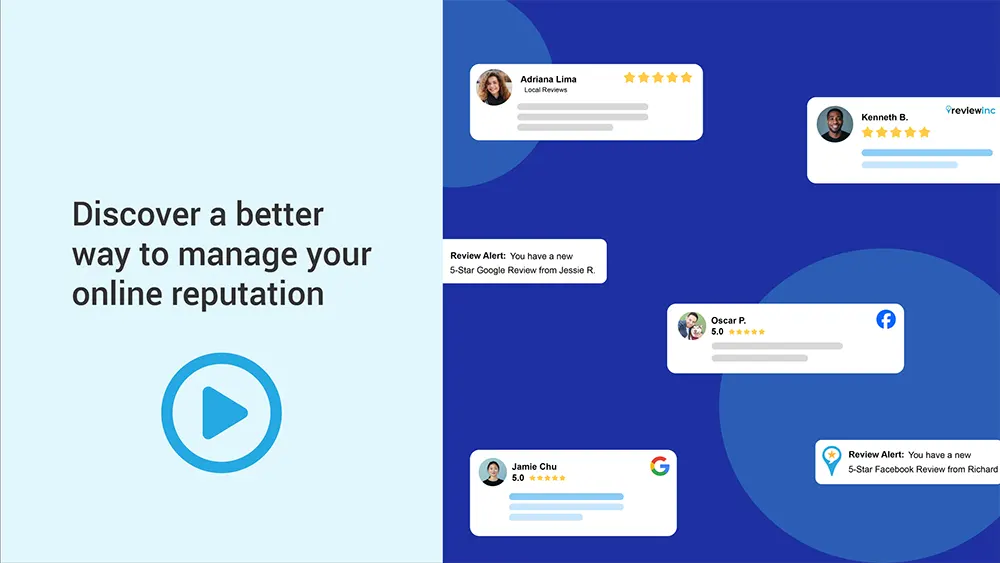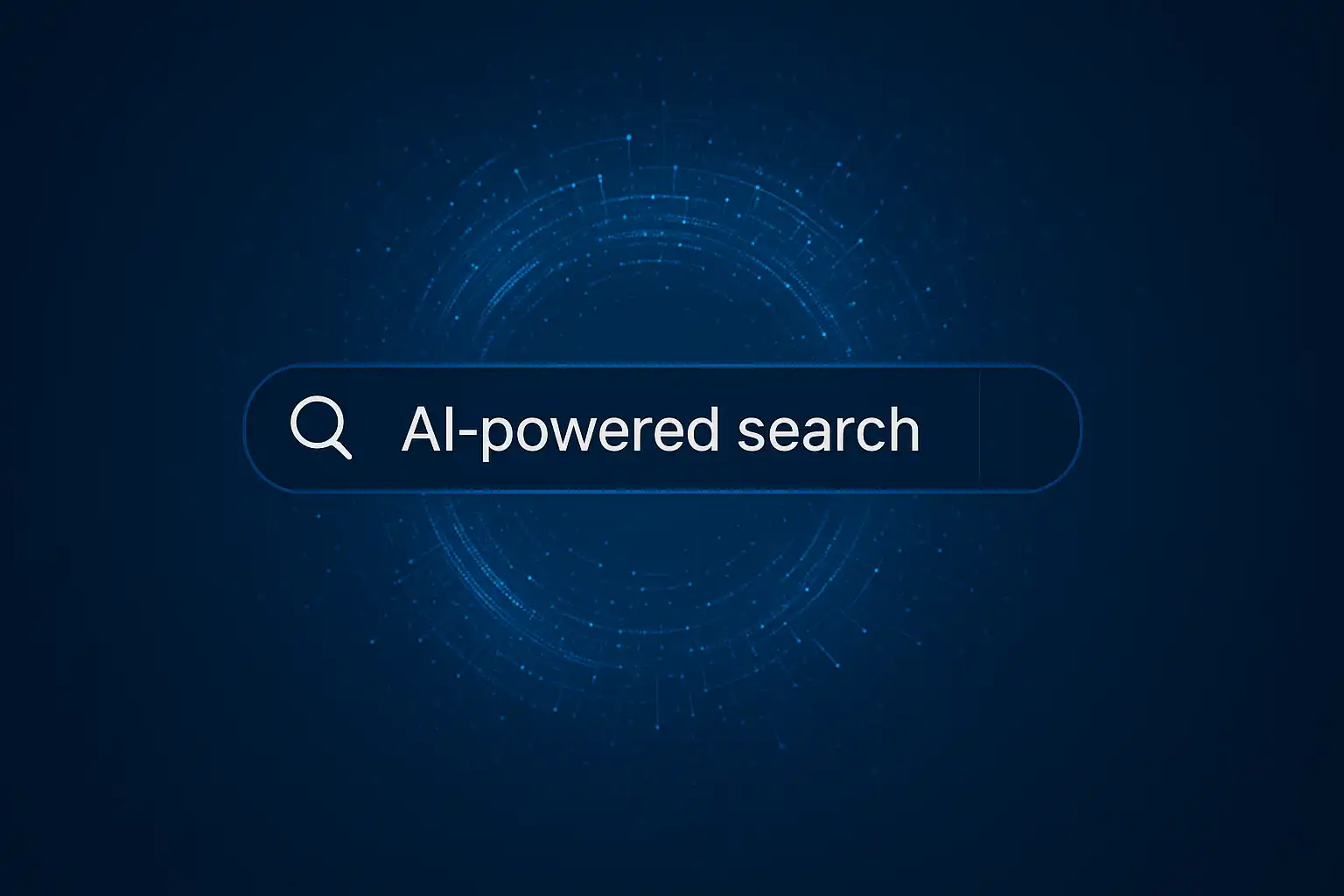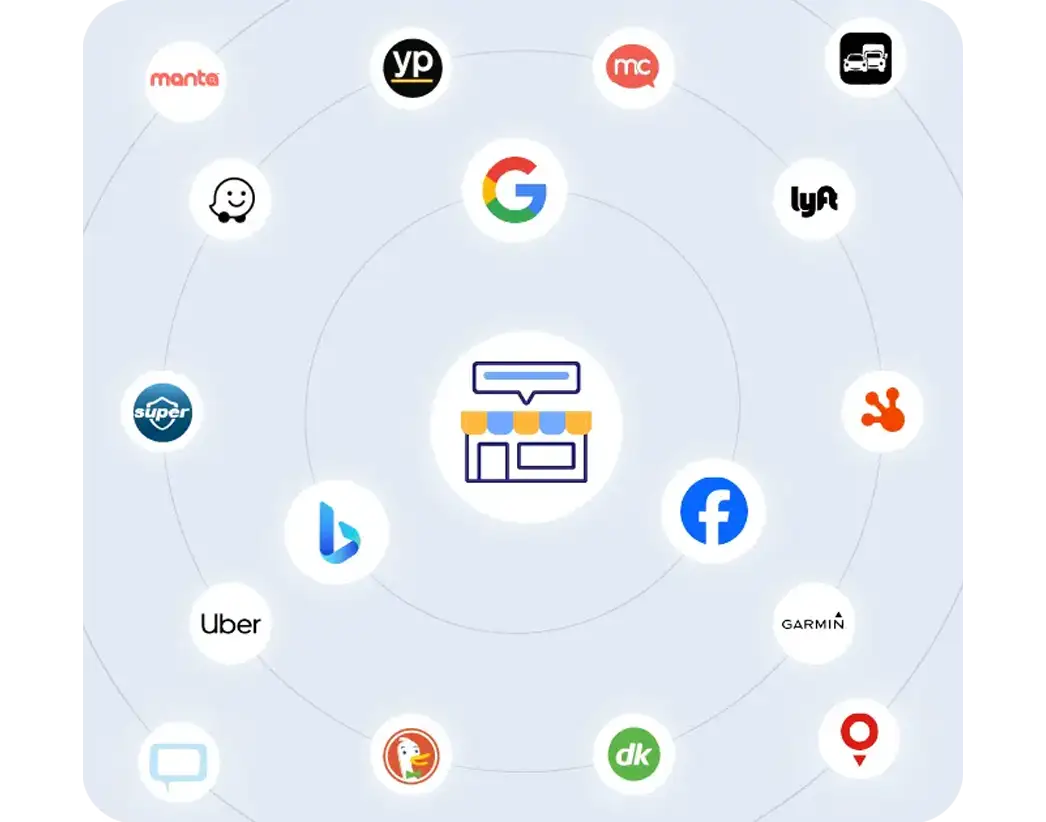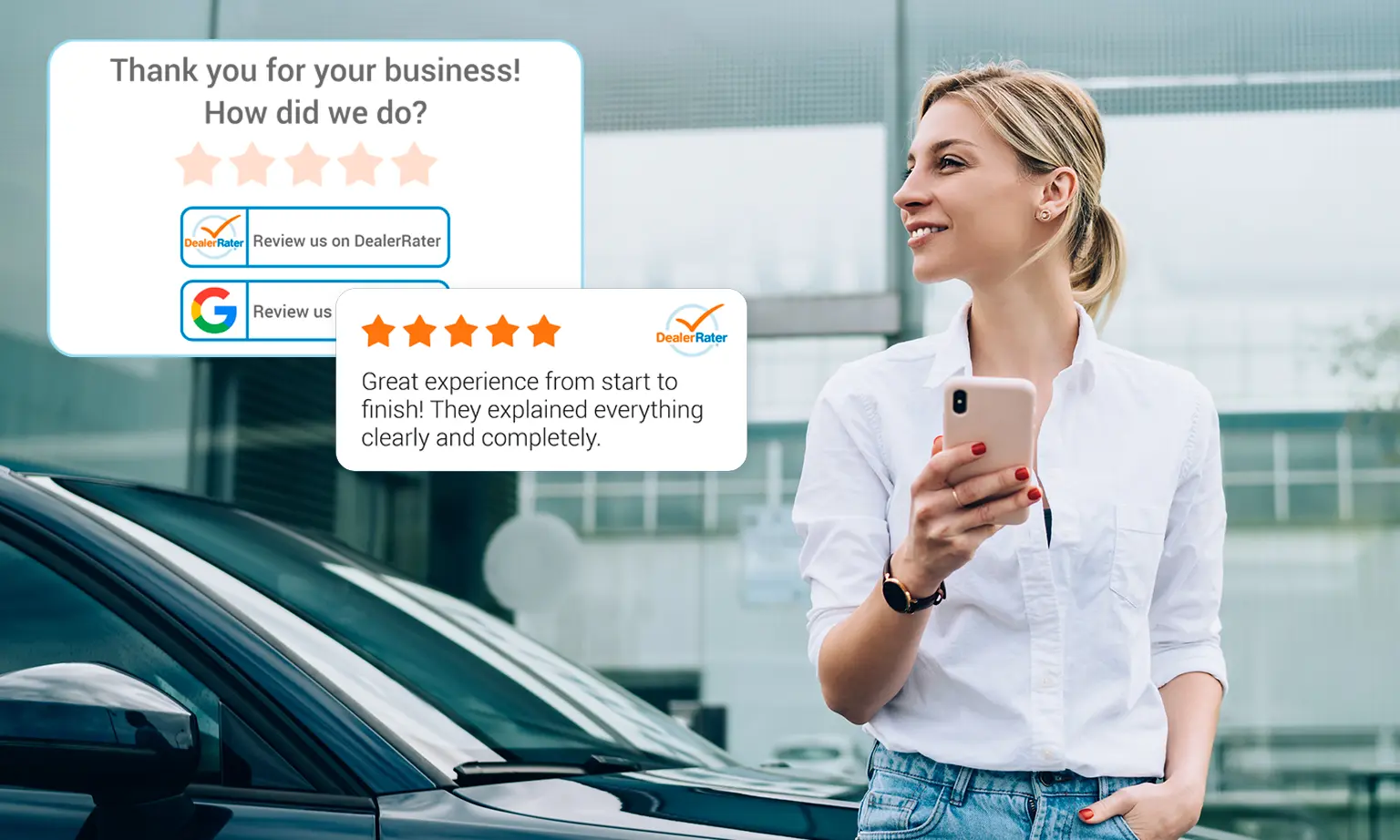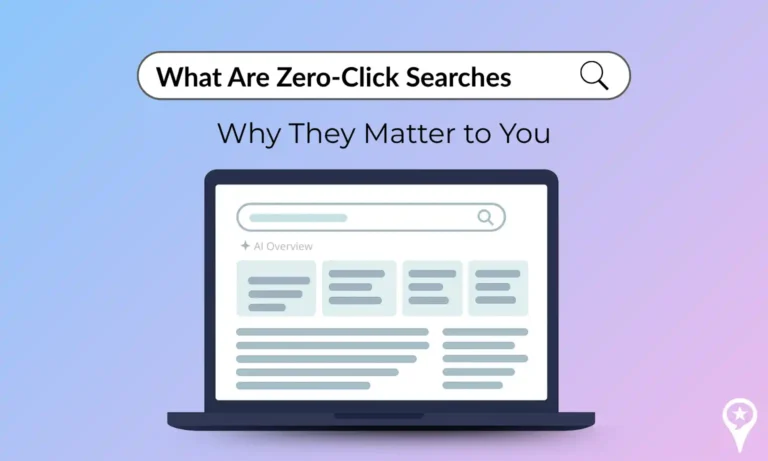
You type “how to make a PB&J sandwich,” and immediately see the answer right there at the top of the page. You don’t need to scroll or click anything. That’s a zero-click search, and it’s changing how people interact with information online.
For business owners, this shift is big. The old model of “rank high, get clicks” doesn’t always hold up anymore. But zero‑click doesn’t have to be scary. Done right, it’s actually a chance to boost your brand’s visibility, authority, and trust. Let’s break down what zero‑click searches are, why they’re growing in 2025, and how they could work in your favor.
In This Guide
What Exactly Is a Zero‑Click Search?
A zero-click search (also called a zero-click result) happens when the user’s query is satisfied directly on the search results page (SERP), so they don’t need to click through to another site.
Think about the different ways Google now gives you answers without leaving the page:
- Quick answer boxes: “What is X?” where a short explanation appears above everything else
- Knowledge panels: The fact-packed boxes on the right side with info about people, companies, or places
- People Also Ask sections: You click one question and more keep unfolding
- AI Overviews: New summaries where Google gives a full answer written in a conversational style using info pulled from different sites
- Results that keep you inside Google: Like Maps listings, YouTube videos, or flight data where you never need to visit another site
All of this has been building for years. Search engines started with just links. Then they added things like rich snippets and the Knowledge Graph. Now with AI, they’re often giving you a full answer before you even have to think about clicking.
Zero-Click Search Example

What you see: Google shows a recipe at the top, with step-by-step instructions, images, and maybe a short video. You don’t have to click a single website to get the answer.
Here’s the key: If your business has a recipe with clear steps, a list of ingredients, and structured data, you might be the one showing up. Even if no one clicks through, people see your name while getting the answer they need.
How you benefit: Later, when they’re shopping for bread, peanut butter, or other recipes, your brand feels familiar, because you already helped them.
The Data: How Big Is Zero‑Click Today?
Zero-click isn’t some minor trend; it’s now the norm for a majority of searches.
- About 60% of Google searches in the U.S. end without a click to another site.
- On mobile, the number is even higher, with about 77% of searches staying on the results page.
- In early 2025, only 40.3% of U.S. searches resulted in an organic click, a decrease from the previous year.
- Meanwhile, clicks that stay within Google (such as YouTube, Maps, or Flights) continue to climb. In March 2025, they made up 14.3% of all clicks, up from 12.1% in 2024.
One thing to note: how these numbers are counted can vary. Some studies look only at clicks to outside websites, while others also count Google’s internal clicks. Either way, the direction is clear: more answers are staying on Google, and fewer are leading users to other sites.
Why Are Zero‑Click Searches Rising?
So why is this happening? A few big reasons:
- People want instant answers. Nobody wants to click around when a quick response will do, especially on mobile or voice search.
- Google is adding more “answer features.” From featured snippets to PAA boxes, structured data makes it easier for Google to serve answers directly.
- AI is the new default. AI Overviews pull together multiple sources into one neat summary, so you get a complete explanation without leaving Google.
- Google wants to keep you in its world. Products like Maps and YouTube keep users on Google’s platforms longer, which also boosts its ad revenue.
- Voice and assistants. Ask Alexa or Google Assistant a question, and you’ll just hear the answer with no click required.
Query type matters. Factual, simple, or how-to questions are the ones most likely to end in zero-click answers.
Challenges and Opportunities with Zero-Click Searches
- Less traffic coming directly to your site.
- Harder to track and prove ROI when conversions happen outside your page
- Smaller brands may be overshadowed by larger, more authoritative sources.
- Old-school SEO strategies (rank, click, convert) don’t always work.
- Your brand still shows up, and people see your name even if they don’t click.
- Being quoted in an AI Overview or snippet builds trust and credibility.
- Local businesses benefit directly: users can call, get directions, or check hours right from Google.
- Snippet visibility often overlaps with voice assistant results.
- You can start tracking new metrics, such as impressions, branded search growth, and feature captures.
Be the Answer Customers See First
Stand out in AI summaries, local listings, and evolving search results
What This Means for Your SEO Strategy
- Go beyond SEO and embrace Answer Engine Optimization (AEO). AEO refers to structuring content for use in snippets, summaries, and AI responses.
- Include scannable content. Google tends to feature pages that break down information with clear lists, steps, or tables. The easier your content is to scan, the more likely it is to be pulled into a snippet.
- Use schema markup. FAQ, HowTo, LocalBusiness schema make your content easier to surface in rich features.
- Double down on trust. Content that proves expertise and authority is far more likely to be cited.
- Measure the right things. Impressions, snippet placements, branded searches, not just page clicks.
- Spread your bets. Email, social, and direct traffic all matter more than ever.
What’s Next for Zero‑Click Search
Expect even more AI-powered summaries that are richer and harder to compete with. “Zero-click by design” is the future — answers built to live entirely inside Google. Authority and branding will matter more than ever. SEO will shift toward making your content the source AI pulls from, not just ranking on page one. Being cited in summaries may not always bring a click — but it will bring recognition, trust, and future business.
What This Means for You
Zero-click isn’t a passing phase; it’s becoming a core part of how people search. Yes, fewer people may land directly on your site. However, the trade-off can be increased visibility, trust, and brand awareness.
The real question: Will you position your content to be the answer? Or let competitors take that spot?
With ReviewInc, businesses can also track and manage the signals that matter most to AI search engines, including reviews, business listings, and social presence.
Questions about Zero-Click Search
What is a zero-click search?
A zero-click search happens when Google provides the answer directly on the search results page, so users don’t need to visit another website.
Examples include featured snippets, AI Overviews, knowledge panels, and People Also Ask sections. These searches are becoming more common in 2025, especially on mobile devices, where speed and convenience matter most.
ReviewInc helps businesses improve their odds of showing up in these spots by keeping listings accurate, reviews strong and recent, and an updated social presence.
Are zero-click searches bad for SEO?
Zero-click searches aren’t automatically bad for SEO, but they just change how visibility works. While they can reduce traffic to your website, they also highlight your brand as a trusted source when your content is featured in a snippet or AI summary. This visibility builds authority, improves brand recall, and often leads to more branded searches and direct visits later.
How do I measure success if clicks go down?
When zero-click searches rise, measuring SEO success requires looking beyond traffic. Track impressions, how often your site is chosen for featured snippets, and whether branded searches are increasing.
You can also measure calls, map requests, and other off-SERP actions that show your content is still driving engagement, even if users don’t land directly on your site.
Will zero-click searches kill all website traffic?
No, zero-click searches won’t eliminate all website traffic. While simple, factual queries are often answered directly on the SERP, more complex searches still drive clicks because users need detailed explanations, context, or products and services.
Businesses that create high-quality, in-depth content can capture these queries while still benefiting from the brand visibility that comes with zero-click features.
What are Google Snippets?
Google Snippets, often called featured snippets, are short text extracts pulled directly from a webpage that answer a user’s query. They usually appear at the very top of search results and can take the form of a paragraph, list, table, or video.
Snippets are one of the most common types of zero-click searches because users often get the answer they need without clicking further.
What is an AI Overview?
An AI Overview is Google’s new AI-powered summary that provides a conversational-style answer at the top of search results. It pulls information from multiple trusted sources and presents it in one combined explanation.
While AI Overviews can reduce clicks, being cited in them builds brand visibility and authority.
